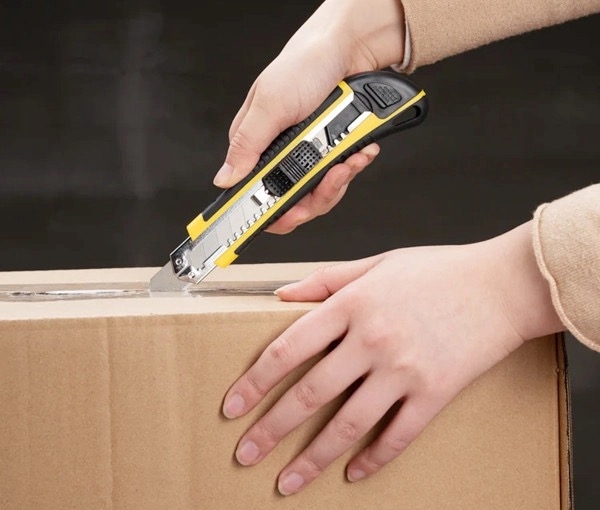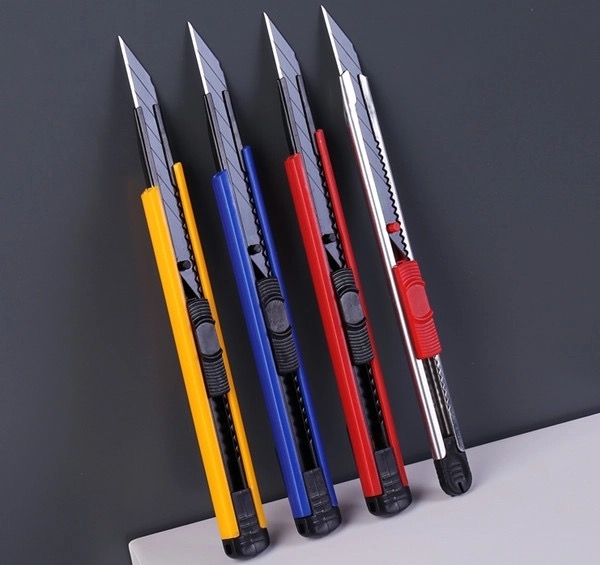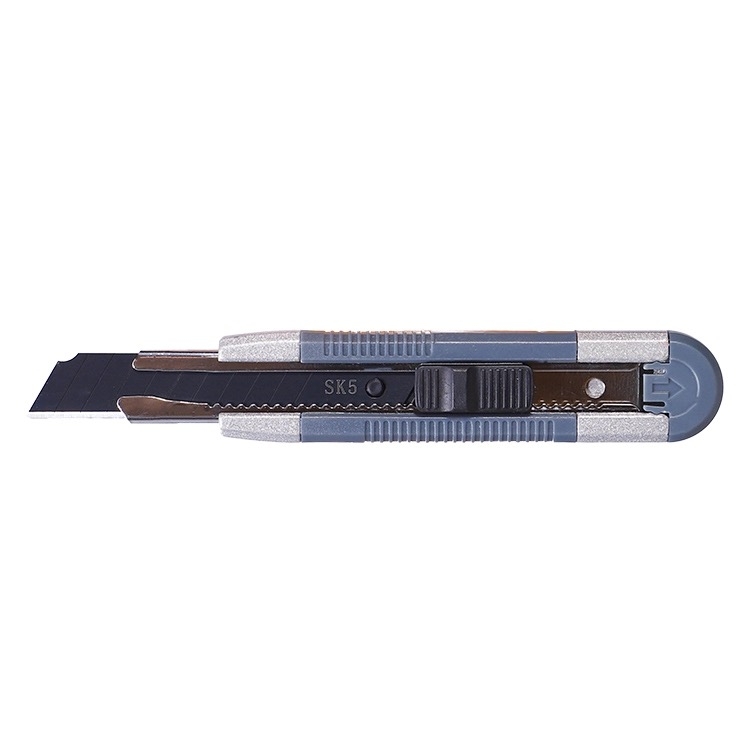When it comes to selecting a cutter knife manufacturer, understanding their manufacturing standards is crucial. The quality of the knives produced can significantly impact the efficiency and effectiveness of your operations. This article will guide you through the essential aspects to consider when evaluating the manufacturing standards of a cutter knife manufacturer.
Understanding Cutter Knives
What Are Cutter Knives?
Cutter knives are specialized tools designed for cutting various materials, including paper, plastic, metal, and wood. They come in different shapes and sizes, tailored for specific applications. The performance of these knives is heavily influenced by their design, material, and manufacturing processes. For instance, a knife designed for cutting thick cardboard will differ significantly from one intended for precision cutting in electronics. Understanding the specific requirements of your application will help you choose the right type of cutter knife.
Importance of Quality in Cutter Knives
The quality of cutter knives directly affects the precision and efficiency of cutting operations. High-quality knives lead to cleaner cuts, reduced waste, and lower operational costs. Additionally, they can enhance safety by minimizing the risk of accidents caused by dull or poorly manufactured knives. Therefore, evaluating the manufacturing standards of a cutter knife manufacturer is essential for ensuring that you receive products that meet your operational needs. Investing in quality knives can also lead to longer service life and better overall performance, making it a worthwhile consideration for any business.

Key Factors to Evaluate Manufacturing Standards
Material Selection
Types of Materials Used
The first step in evaluating a cutter knife manufacturer is to understand the materials they use. Common materials include high-carbon steel, stainless steel, and specialized alloys. Each material has its own properties, such as hardness, corrosion resistance, and wear resistance, which affect the knife's performance. For example, high-carbon steel is known for its sharpness and edge retention, while stainless steel offers excellent corrosion resistance, making it suitable for environments where moisture is a concern.
Sourcing and Quality of Raw Materials
In addition to the type of material, the quality of the raw materials is crucial. Manufacturers should source their materials from reputable suppliers who adhere to strict quality standards. This ensures that the knives produced are durable and reliable. A manufacturer that prioritizes high-quality raw materials is likely to produce knives that perform consistently well over time, reducing the need for frequent replacements and repairs.
Manufacturing Processes
Precision Engineering
The manufacturing process should involve precision engineering techniques. This includes CNC machining, laser cutting, and other advanced manufacturing methods that ensure high accuracy in the production of cutter knives. Precision engineering minimizes variations in dimensions, leading to consistent performance. The use of advanced technology not only enhances the quality of the knives but also allows for more complex designs that can improve functionality.
Quality Control Measures
A reputable manufacturer will have stringent quality control measures in place. This includes regular inspections and testing of materials and finished products. Look for manufacturers that follow industry standards and certifications, such as ISO 9001, which indicates a commitment to quality management. Effective quality control processes help identify defects early in the production process, ensuring that only the best products reach the market.
Design and Customization
Knife Design Capabilities
Evaluate the manufacturer's ability to design knives tailored to specific applications. A good manufacturer should offer customization options, allowing you to specify dimensions, shapes, and features that meet your operational requirements. Custom designs can significantly enhance the efficiency of your cutting processes, as they can be optimized for the materials and conditions you work with.
Innovation in Design
Innovation is key in the manufacturing of cutter knives. Manufacturers that invest in research and development are more likely to produce cutting-edge designs that enhance performance and efficiency. Look for companies that showcase their innovative designs and technologies. Innovations such as ergonomic handles, advanced coatings for improved durability, and unique blade geometries can provide significant advantages in various cutting applications.

Performance Testing
Testing Procedures
Understanding the testing procedures used by the manufacturer is essential. This includes how they test the hardness, sharpness, and durability of their knives. Manufacturers should conduct rigorous testing to ensure their products can withstand the demands of various cutting applications. Testing should simulate real-world conditions to provide a realistic assessment of the knife's performance.
Feedback from End Users
Feedback from end users can provide valuable insights into the performance of the knives. Look for testimonials or case studies that highlight the experiences of other customers. This can help you gauge the reliability and effectiveness of the manufacturer's products. Engaging with other users can also provide practical insights into how the knives perform in different environments and applications.
Certifications and Standards
Industry Certifications
Check if the manufacturer holds any industry certifications. Certifications such as ISO, ASTM, or ANSI indicate that the manufacturer adheres to recognized standards in quality and safety. These certifications can provide assurance of the manufacturer's commitment to producing high-quality cutter knives. Additionally, certifications can enhance the manufacturer's credibility and reputation in the industry.
Compliance with Regulations
Ensure that the manufacturer complies with relevant regulations and standards in your industry. This is particularly important if you operate in sectors with strict safety and quality requirements, such as food processing or pharmaceuticals. Compliance with regulations not only ensures product safety but also protects your business from potential legal issues.
Customer Support and Service
Responsiveness and Communication
Evaluate the manufacturer's customer support and communication practices. A reliable manufacturer should be responsive to inquiries and provide clear information about their products and services. Good communication is essential for addressing any concerns or issues that may arise. A manufacturer that values customer relationships is more likely to provide a positive experience throughout the purchasing process.
After-Sales Support
Consider the after-sales support offered by the manufacturer. This includes warranty policies, maintenance services, and availability of replacement parts. A manufacturer that provides comprehensive after-sales support demonstrates a commitment to customer satisfaction. Effective after-sales support can help you resolve issues quickly and ensure that your operations run smoothly.

Conclusion
Evaluating the manufacturing standards of a cutter knife manufacturer involves a thorough assessment of various factors, including material selection, manufacturing processes, design capabilities, performance testing, certifications, and customer support. By taking the time to evaluate these aspects, you can ensure that you partner with a manufacturer that meets your quality standards and operational needs. High-quality cutter knives are essential for achieving efficiency and precision in your cutting operations, making this evaluation process a critical step in your procurement strategy. Investing in the right manufacturer can lead to significant long-term benefits, including improved productivity, reduced costs, and enhanced safety in your workplace.
Frequently Asked Questions regarding Cutter knife Manufacturer
1. What materials are commonly used in the production of cutter knives?
Answer: Common materials for cutter knives include high-carbon steel, stainless steel, and specialized alloys. High-carbon steel is known for its sharpness and edge retention, while stainless steel offers excellent corrosion resistance, making it suitable for moist environments.
2. How can I assess the quality control measures of a cutter knife manufacturer?
Answer: You can assess quality control measures by inquiring about their inspection processes, testing protocols, and adherence to industry standards such as ISO 9001. A reputable manufacturer will provide details on how they ensure the quality and consistency of their products.
3. Why is customization important when selecting a cutter knife manufacturer?
Answer: Customization is important because it allows you to tailor the knives to specific applications, optimizing their performance for the materials and conditions you work with. This can lead to increased efficiency and better results in your cutting operations.
4. What role does innovation play in the manufacturing of cutter knives?
Answer: Innovation plays a crucial role as it leads to the development of advanced designs and technologies that enhance the performance and efficiency of cutter knives. Manufacturers that invest in research and development are more likely to produce cutting-edge products that meet evolving industry needs.
5. How can I verify if a manufacturer complies with industry regulations?
Answer: You can verify compliance by checking for relevant certifications and standards, such as ISO, ASTM, or ANSI. Additionally, you can ask the manufacturer for documentation that demonstrates their adherence to safety and quality regulations specific to your industry.






